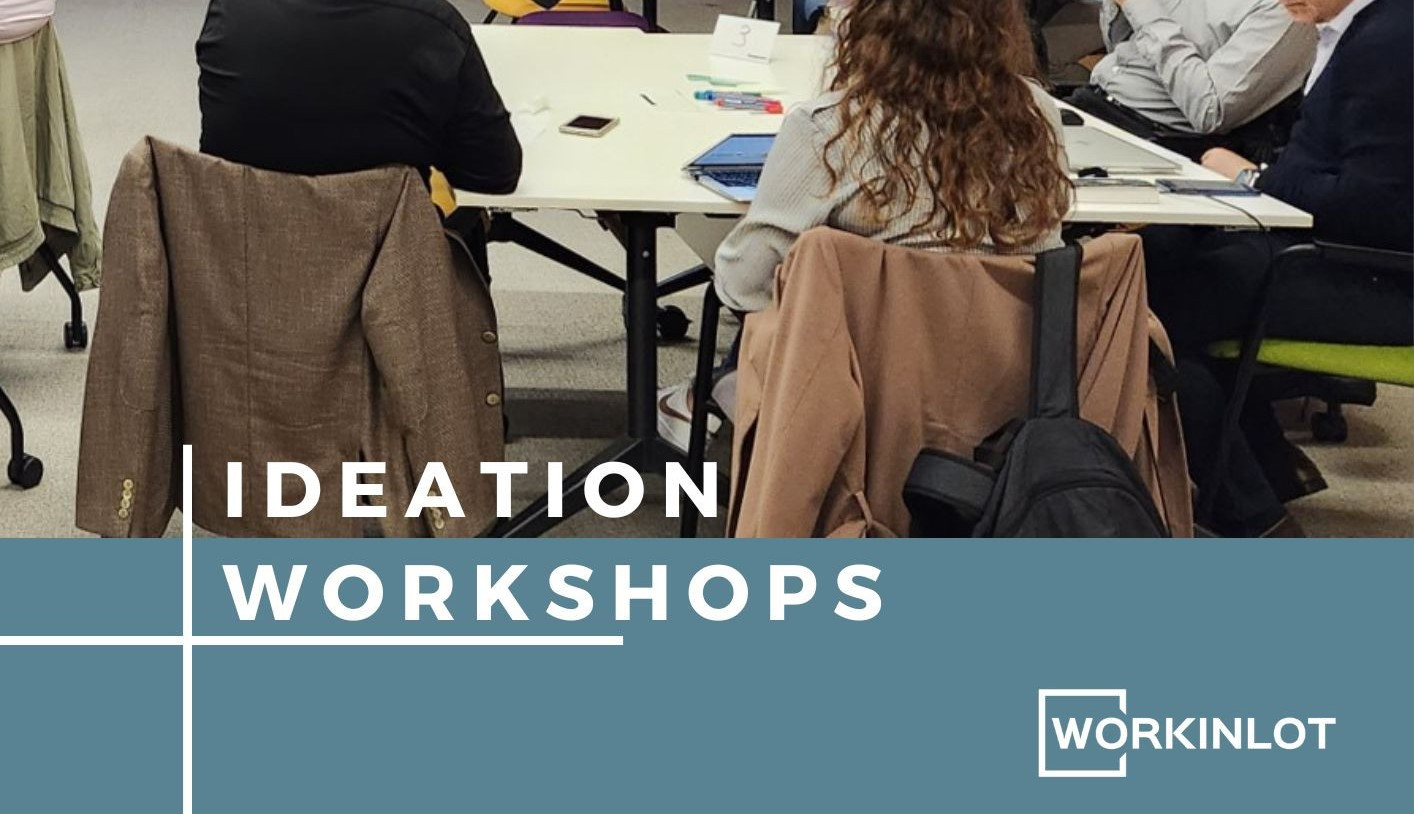
Many companies have various initiatives related to corporate entrepreneurship, such as idea competitions and idea collection portals etc. Most of these companies are also concerned about the quality, feasibility, and innovative quality of the submitted ideas. There can be several underlying reasons for this issue. For example, it could stem from the company’s innovation culture, the value placed on employee suggestions, or the ineffective motivation of employees. However, there is an even simpler reason that we almost always experience:
Employees don’t have sufficient knowledge and experience in ideation.
To address this issue, ideation workshops are a highly effective method. While it’s not feasible to involve the entire company in these workshops, including two critical participant groups we’ll discuss below will lead to benefits that ripple throughout the entire organization like a butterfly effect.
Ideation Workshop Objectives
Ideation workshops are often used to explore new business models. These new models can either exist within the company’s core business model or be completely independent (corporate entrepreneurship). Ideation workshops can also be used digital transformation, and continuous improvement purposes. However, in such cases, efforts focused on needs assessment and problem identification tend to be more successful.
Workshop Participants
In a design workshop, the target number of participants should ideally fall between 15 and 30. This range ensures broad participation while allowing each participant’s voice to be heard and their contributions to be meaningful. Let’s assume we’re collecting ideas related to new business models. When selecting participants, prioritize senior experts and mid-level managers from departments which closely work with customers and technology. The involvement of top-level management (directors, CXOs) is primarily a cultural matter. If these executives will not dominate the discussions within teams with their egos or if there’s a skilled facilitator who can manage such situations, their participation in workshops is highly recommended.
Two groups of participants can be specifically invited to workshops. One of these groups consists of young and innovative employees (champions, early adopters) whom you believe will be highly effective in ideation workshops. The other group includes employees who are skeptical about innovative processes and methods (critics, laggards). The output of the workshop should be properly communicated to the rest of the organization in order the create company wide motivation.
Workshop Agenda
The Ideation workshop is an example of the design thinking process condensed into a single day. It combines the steps of establishing empathy and identifying needs within the design thinking process, leaving the testing and iteration phases for later.
3 important areas you need build empathy with for ideation are customer needs, strengths, weaknesses and unique aspect of your business model and the context (trends, technologies etc). Two out of these tree areas can be selected and analyzed based on ideation objectives.
To prevent group thinking during ideation, we start with individual / silent ideation and then continue as a group. During individual ideation, it’s essential to ask questions and provide examples.
If you have any market research, benchmark reports, or similar materials, they can be presented at this stage. Subsequently, individual ideas should be discussed within the table teams. The table teams should prioritize a few ideas inspired by individual ideas or discussions. Finally, each table team should present their ideas and gather feedback from other teams.
Finally, table teams should develop a prototype after iterating on the idea they presented using feedback from the rest of the room. Simple prototypes are essential for refining and discussing ideas in more detail. Depending on the workshop’s objectives and the specific idea, different prototyping approaches can be chosen. This decision can be made either before or during the workshop, but being prepared is crucial.
When groups present their prototypes, a skilled facilitator should question all the details and strive to find meaning. Often, the ideas or prototypes developed in these workshops won’t translate directly into real-world implementation. This workshop serves as an opportunity for inspiration and motivation. Therefore, it’s essential to continuously open up new perspectives.
Outcomes and Next Steps
Workshop participants learn about idea development methods, defining good ideas, and team dynamics in creative work. It increases awareness and motivation related to innovation. If this workshop was conducted within an organization that has a structure for idea collection, the quality of ideas presented by workshop participants would be enhanced. These ideas serve as examples for those who were not directly involved. If this workshop is part of a business model innovation project, detailed research on already prototyped ideas is typically requested as part of the assignment. Validation studies are initiated.
At Workinlot we design process frameworks that enable companies to collaborate with technology firms and startups. To ensure these designs are optimally developed, we provide iterative project management support in partnership with the organization.
Through this collaborative and iterative knowledge transfer, we have helped establish corporate venture capital funds, open innovation platforms, and venture builder structures.
Let's connect and collaborate to identify and validate new opportunities.